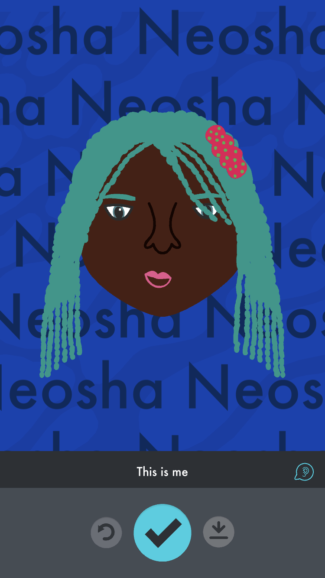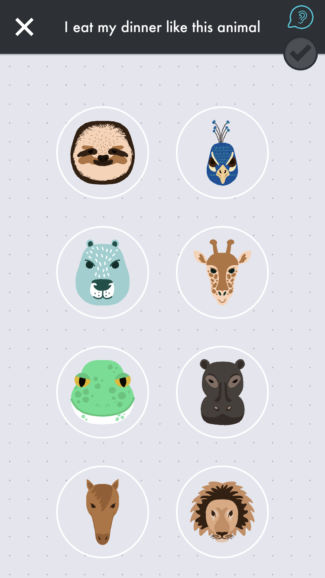DailyBean
LQ: 9.6
Recommended Age: 4+
Skills Used: Self-Awareness, Self-Control, Reading, Writing
 Me: A Kid’s Diary is an app where kids can keep a virtual multimedia diary of their daily lives. Rather than writing everything down each day, the user answers a series of prompts using words, drawings, photos, GIFs, stickers, colors, voice memos, and characters they created. These “entries” are all displayed behind the character in fun bubbles that can be clicked on and viewed over and over.
Me: A Kid’s Diary is an app where kids can keep a virtual multimedia diary of their daily lives. Rather than writing everything down each day, the user answers a series of prompts using words, drawings, photos, GIFs, stickers, colors, voice memos, and characters they created. These “entries” are all displayed behind the character in fun bubbles that can be clicked on and viewed over and over.
The app begins by letting the user create themselves as a drawing which is always displayed at the bottom of the screen. The app has a diverse array of skin tones, eye and hair colors, and facial features to capture every child accurately. Glasses, diverse hairstyles, and hijabs are also available as an option for children, creating a greater opportunity for children to truly see themselves represented in their drawing.
When the user is done creating themselves, they have the opportunity to create their family tree and add friends and pets as well. The result is a scrapbook of their lives with pictures, text, audio, and photographs. While the app can be used with children as young as three, it could also prove useful for older children as well.
Me: A Kid’s Diary is available for purchase on iOS.
 Self Control: Managing our actions, feelings and behaviors.
Self Control: Managing our actions, feelings and behaviors.
For children who have a difficult time managing their emotions, keeping a journal or diary is a good way for them to work out some of these feelings in a productive way. Me: A Kid’s Diary has prompts that speak to emotions, asking children to pick a color they associate with sadness, or joy. It then creates small interactive stickers showcasing these emotions on the child’s diary backdrop. There are also prompts surrounding emotions and prompts about the future, where children can work out their frustrations or hopes in a way that is small and manageable.
 Self Awareness: Understanding our own actions, thoughts and feelings.
Self Awareness: Understanding our own actions, thoughts and feelings.
Journaling is a way that children can process events in their lives and the emotions that those events can produce. It can be hard for children to express those feelings, especially if they are not sure how they feel about the situation. Prompts such as “This is how I know I am disappointed” allow the child to pause and reflect on their own emotions and create a drawing or add text that helps them capture their response. This can then be referred back to if the child does something and needs to process how they feel about it. Choosing the prompts where you associate emotions with colors can also help children realize how they are feeling or communicate how they are feeling in a way that does not require precise expression.
All membership plans come with full access to our entire suite of tools learning guides, and resources. Here are a few of the ones we think you’ll like the most: